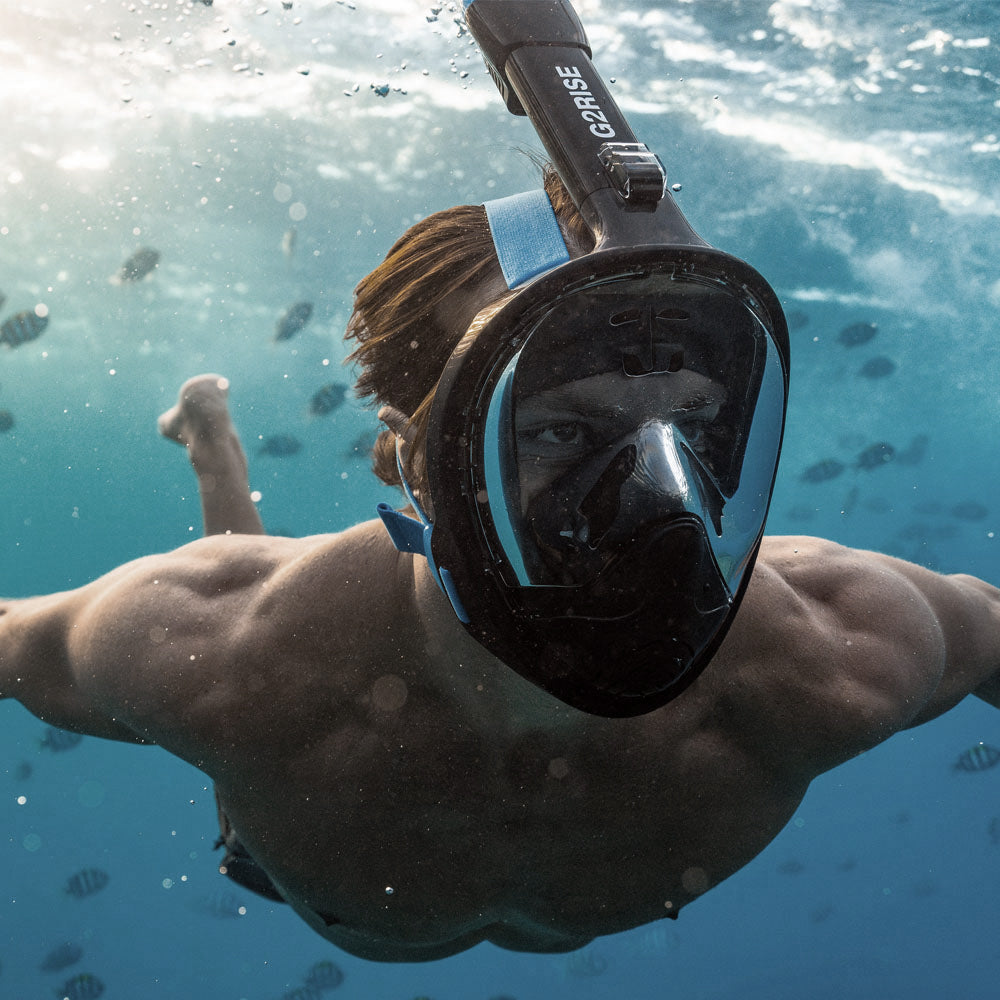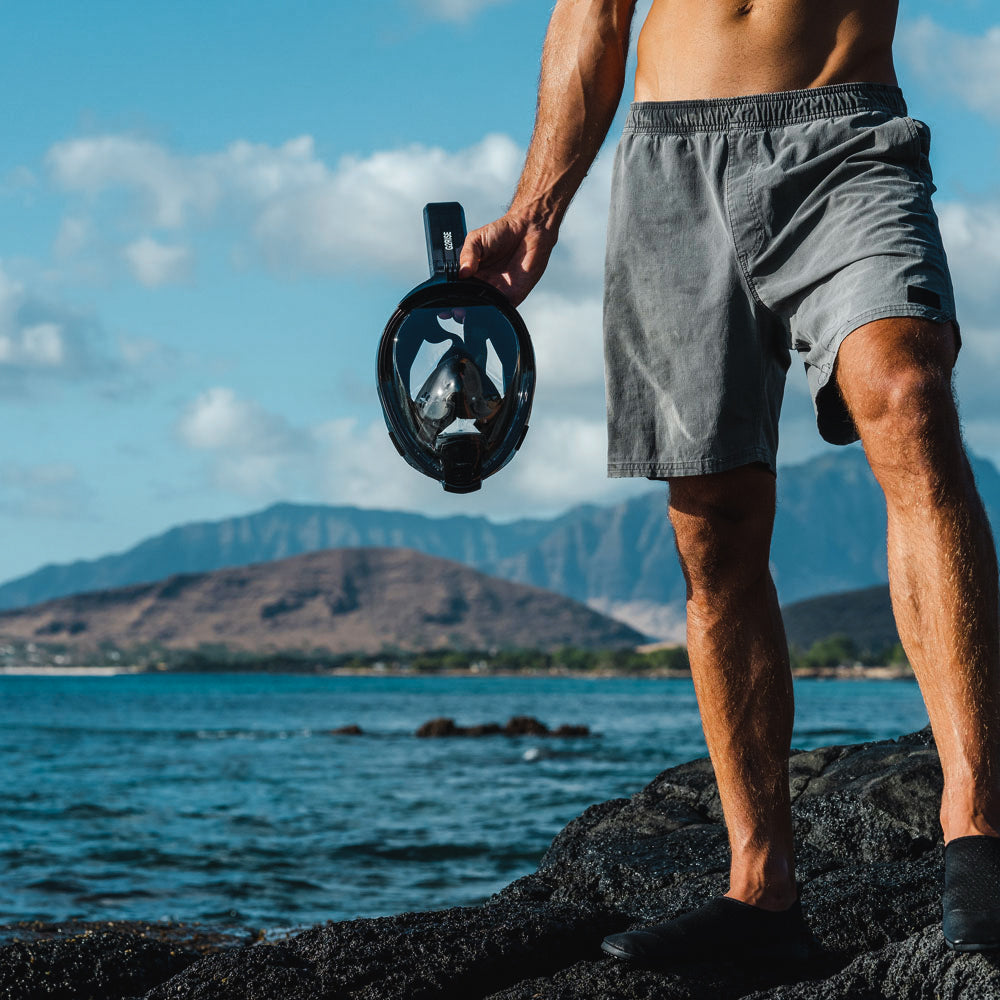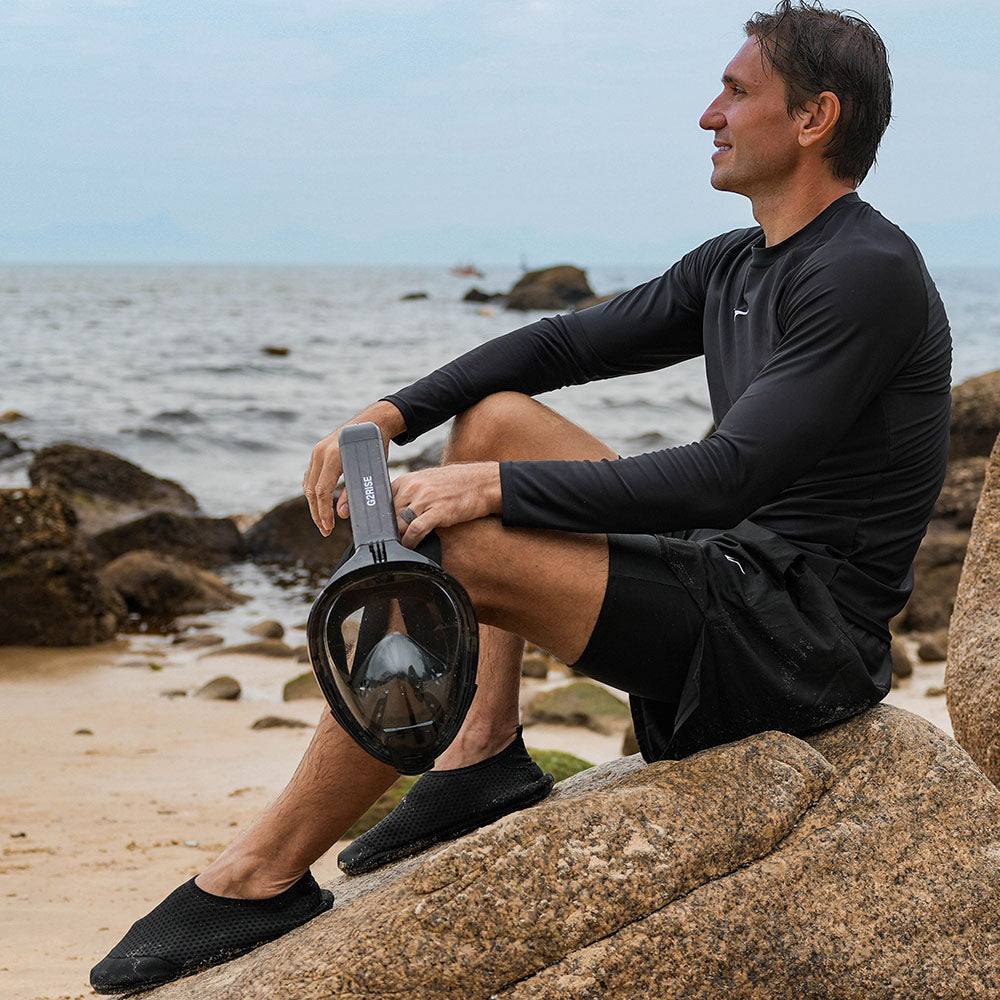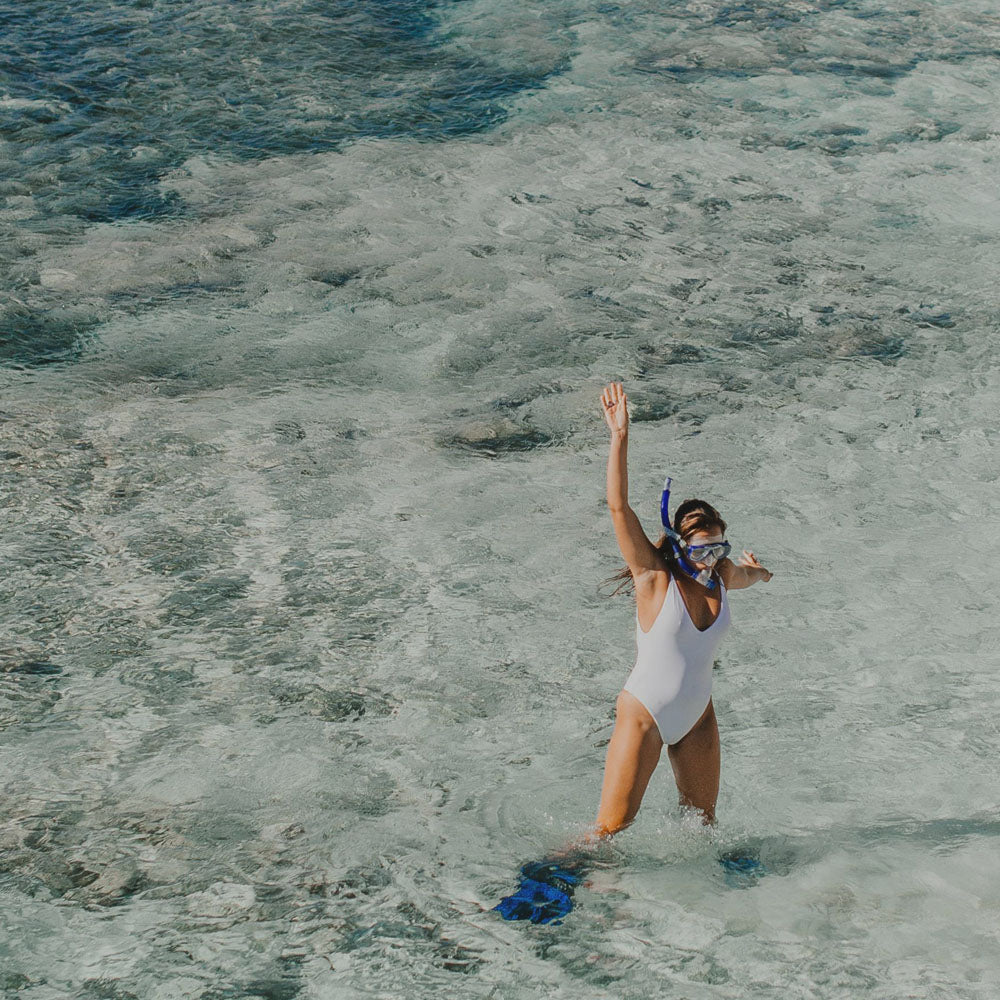Millions of people snorkel annually, yet few think about how their colorful snorkeling equipment might affect marine life. To casual snorkelers and those interested in sea creatures, it presents a number of questions: Might different colored equipment affect the behavior of fish around us? Should we pay more attention to the colors we wear? Does it matter where we snorkel? These are questions that are worth asking as we reflect on how to behave best within the underwater world we visit.

Snorkeling Basics: Waters, Wildlife, and Equipment
Where People Snorkel
People snorkel in three main types of water habitats. Coral reefs are the most popular, offering clear, warm water and diverse sea life, especially in areas like the Great Barrier Reef and the Caribbean. Rocky shores, common along the Pacific coast and in the Mediterranean, have an assortment of fish, octopuses, and sea stars. Bays and lagoons offer calm waters where new snorkelers will often start out snorkeling.
Marine Life You Might See
Each snorkeling site carries a unique selection of sea animals. In coral reefs, parrotfish, angelfish, butterflyfish, and clownfish are commonly found swimming between the coral. Sea turtles float by in any tropical sea. Sea bass, groupers, and brightly hued wrasses are often encountered in rocky areas. Rays often rest on sand bottoms, while moray eels poke their heads out from under rocks.
Essential Snorkeling Gear
The basic equipment for snorkeling includes:
- A mask that creates a waterproof seal around your eyes and nose
- A snorkel tube that lets you breathe while floating face-down
- Fins that help you swim efficiently through the water
- A wetsuit or rash guard that keeps you warm and protects your skin from the sun
Most gear comes in standard colors like black and blue, as well as bright options including yellow, orange, and neon shades. Wetsuits typically come in black, blue, or combinations with bright accent colors.

How Sea Life Sees and Responds to Color
Their Eyes Capture Colors Humans Can't See
Fish have a more complex color vision system than humans. Their eyes contain four to five types of color-sensing cells, while human eyes have only three. This extra sensitivity lets them see colors we can't detect, which makes sense given their underwater world. Reef fish are particularly good at seeing a wide range of colors, while deep-sea fish focus more on blues and greens - colors that travel best through water.
Colors Fade Away in Deep Water
The ocean acts like a color filter. Red is the first color to disappear, vanishing at around 15 feet deep. Orange and yellow fade out next, leaving only blue and green in deeper waters. This filtering effect is why many deep-sea fish are red - their color makes them nearly invisible in their dark environment where red light doesn't reach.
Color Signals Matter for Fish Survival
Fish rely on colors for essential daily activities. A fish might approach a yellow object thinking it's food, or swim away from a bright color that signals danger in their natural environment. Colors help them:
- Find food that matches their usual prey's colors
- Pick healthy mates that show bright, clear colors
- Spot and avoid predators
- Guard their territory from others
While we know these color responses exist in nature, we don't have enough research about how fish react to artificial colors from snorkeling gear. More studies are needed to understand the exact effects.
Different Waters Make Colors Look Different
A color that attracts fish in one situation might repel them in another because water conditions keep changing. The same blue snorkel looks different:
- At various depths
- Under sunny versus cloudy skies
- In clear versus murky water
- When you're moving versus staying still
This knowledge about how fish see and react to colors leads us to our next topic: choosing the right colors for your snorkeling gear.
How Equipment Colors Might Affect Marine Life
Yellow and Orange Gear Attracts Curious Fish
Fish often respond to bright snorkeling equipment in surprising ways. A yellow snorkel bobbing through the water might catch their attention like a banana-colored fish they normally chase for food. Small reef fish sometimes swim right up to neon-striped fins, perhaps seeing them as potential companions. During breeding season, the situation can become more complex, as territorial fish may perceive bright-colored equipment as a challenge in their space. The reactions vary widely among species, with some curious fish following colorful gear while others display signs of agitation.
Black and Navy Blue Gear Goes Unnoticed
Dark-colored snorkeling gear creates a more natural presence underwater. When snorkelers wear black, navy, or dark gray equipment, their silhouettes mirror the shadows that fish encounter in their daily lives. These familiar shapes resemble the natural patterns of light and shadow cast by boats, coral overhangs, and rocky formations. Marine life typically maintains its normal behavior around dark-colored equipment, treating these shadows as part of their everyday environment.
White and Neon Colors Scare Fish Away
Pure white equipment underwater can create an unnaturally sharp contrast that puts fish on alert. Similar reactions occur with bright pink or neon green gear - colors that rarely appear in marine environments. The effect becomes more pronounced in marine protected areas, where fish have limited exposure to snorkelers and maintain more of their natural wariness. Their instinctive reactions to unusual colors often mirror their responses to unfamiliar elements in their habitat.
Busy Locations Make Color Less Important
The influence of equipment color diminishes in certain situations. During large feeding events, fish focus intensely on food rather than the colors around them. Similarly, in areas with frequent boat traffic or popular snorkeling spots, marine life becomes accustomed to human presence regardless of equipment colors. Strong currents or surge conditions also override color preferences, as fish prioritize navigation and safety over their usual color responses.

How to Choose and Use Colored Equipment Responsibly
Balance Wildlife Impact with Safety Needs
Base your equipment color choices on your snorkeling conditions. For calm, clear waters, choose predominantly dark gear with minimal bright accents - just enough for safety. In situations requiring high visibility, use removable bright items like a safety vest over your dark wetsuit, rather than choosing all-bright gear. This way, you can adjust your visibility level based on conditions while minimizing wildlife disturbance.
Adapt Your Color Choices to Marine Life
Different marine environments may need different approaches. In areas with territorial fish, avoid bright colors that might trigger aggressive responses. Where curious fish are known to bite at bright objects, stick to darker colors to prevent encouraging this behavior. For areas with easily startled species, choose muted colors that won't cause unnecessary stress.
Match Colors to Time and Place
Consider the timing and location of your snorkel:
- Early morning or late afternoon: Use slightly lighter colors as natural light is dimmer
- Noon in clear water: Darker colors work best as sunlight penetration is strongest
- Areas with seasonal marine life: Check if certain species visiting the area are sensitive to specific colors
- Protected marine zones: Follow any specific color regulations designed to protect local species
Monitor Wildlife Reactions and Adjust
Pay attention to how marine life responds to your gear. If fish consistently show stress or avoidance behaviors, consider modifying your equipment colors even if they meet safety requirements. Document and share your observations with local snorkel operators - this helps build better practices for everyone.

Pick Gear Colors That Help Both You and Marine Life!
Dark colors with small white safety markings are usually best for snorkeling gear. Watch to see how the fish react to the colors of your gear and be ready to switch them out if they seem stressed. Choosing colors that match the conditions allows you to view sea life in its habitat while keeping it peaceful.









Leave a comment
This site is protected by hCaptcha and the hCaptcha Privacy Policy and Terms of Service apply.